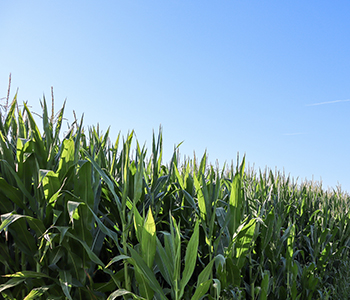Making Seed Decisions Simple
Sep 18, 2023

Mike Tufte
Seed Specialist
SEED—IT’S AN impressive thing when you think about it. It starts off as one single grain, simply an embryo and a food reserve surrounded by a thin protective covering. We plant it in some soil, give it a little fertilizer, then hope and pray Mother Nature gives us some moisture. That little seed sprouts and begins stealing carbon from the atmosphere. Molecules within the plant go to work like gears in a clock, producing “plant food.” Over time, the seed grows big and strong, like we were supposed to if we ate our green beans. That one single grain turns itself into tens (or hundreds) of new grains. It seems so simple, right?
Not always! Last year, there were five soybean germplasm companies in the United States. They commercially sold 174 different varieties under 10 different trait platforms. As time goes on, these numbers keep increasing. So how do we decide which variety we should plant?
Today, the important thing to consider is what traits we need to protect our acres from all the yield-stealing thieves—whether that be weeds, insects, weather patterns, etc. When we look at soybeans, we’re living in the world of 2,4-D and dicamba. The year 2024 will be the sixth commercial season for Enlist E3™ and the fourth commercial season for XtendFlex®. These technologies are all we currently have, and that doesn’t appear to be changing for the next four to five years. That doesn’t mean we’re not making progress. Breeders are constantly working to bring us better agronomic packages and yield enhancements. Each new generation seems to be stronger than the last. Just because a bean isn’t “traited,” it doesn’t mean it doesn’t have excellent field tolerance to a particular pest. Also, did I mention HT4 soybeans are on the horizon? These soybeans likely won’t see mass acres until 2027, pending approvals, but they are a tool coming in a time of need.
The name HT4 itself can be confusing. HT4 actually brings us five traits of protection. It combines XtendFlex, 2,4-D and HPPD. It’s called HT4 because it is a fourth-generation bean. Regardless, HT4 brings us a single bean with all the protection we need in a one-stop shop. Pair that with the agronomic packages they’ve been able to breed, and you’re set up for success. The HPPD is a much-needed addition, but we still need to protect what we have. The best way to do that is to use a trusted pre-emerge, use full labeled rates and incorporate herbicides with residuals.
Yield is predetermined. As Key Agronomists, it’s our job to help you protect that yield. Contact your Agronomist about your plans for 2024, and let us take the guesswork out of the equation when it comes to your seed decisions. Seed can be simple again!
Seed Specialist
SEED—IT’S AN impressive thing when you think about it. It starts off as one single grain, simply an embryo and a food reserve surrounded by a thin protective covering. We plant it in some soil, give it a little fertilizer, then hope and pray Mother Nature gives us some moisture. That little seed sprouts and begins stealing carbon from the atmosphere. Molecules within the plant go to work like gears in a clock, producing “plant food.” Over time, the seed grows big and strong, like we were supposed to if we ate our green beans. That one single grain turns itself into tens (or hundreds) of new grains. It seems so simple, right?
Not always! Last year, there were five soybean germplasm companies in the United States. They commercially sold 174 different varieties under 10 different trait platforms. As time goes on, these numbers keep increasing. So how do we decide which variety we should plant?
Today, the important thing to consider is what traits we need to protect our acres from all the yield-stealing thieves—whether that be weeds, insects, weather patterns, etc. When we look at soybeans, we’re living in the world of 2,4-D and dicamba. The year 2024 will be the sixth commercial season for Enlist E3™ and the fourth commercial season for XtendFlex®. These technologies are all we currently have, and that doesn’t appear to be changing for the next four to five years. That doesn’t mean we’re not making progress. Breeders are constantly working to bring us better agronomic packages and yield enhancements. Each new generation seems to be stronger than the last. Just because a bean isn’t “traited,” it doesn’t mean it doesn’t have excellent field tolerance to a particular pest. Also, did I mention HT4 soybeans are on the horizon? These soybeans likely won’t see mass acres until 2027, pending approvals, but they are a tool coming in a time of need.
The name HT4 itself can be confusing. HT4 actually brings us five traits of protection. It combines XtendFlex, 2,4-D and HPPD. It’s called HT4 because it is a fourth-generation bean. Regardless, HT4 brings us a single bean with all the protection we need in a one-stop shop. Pair that with the agronomic packages they’ve been able to breed, and you’re set up for success. The HPPD is a much-needed addition, but we still need to protect what we have. The best way to do that is to use a trusted pre-emerge, use full labeled rates and incorporate herbicides with residuals.
Yield is predetermined. As Key Agronomists, it’s our job to help you protect that yield. Contact your Agronomist about your plans for 2024, and let us take the guesswork out of the equation when it comes to your seed decisions. Seed can be simple again!